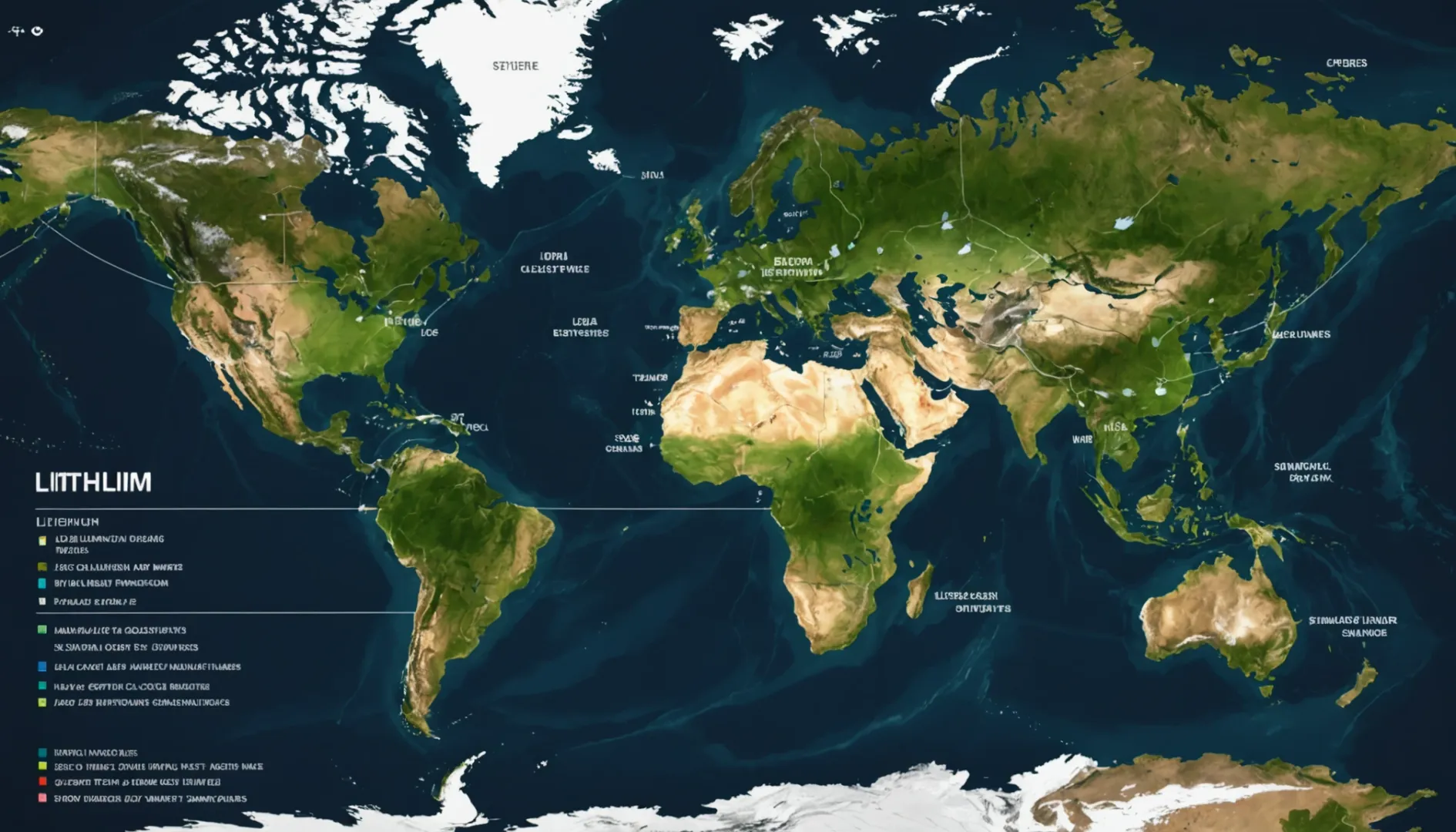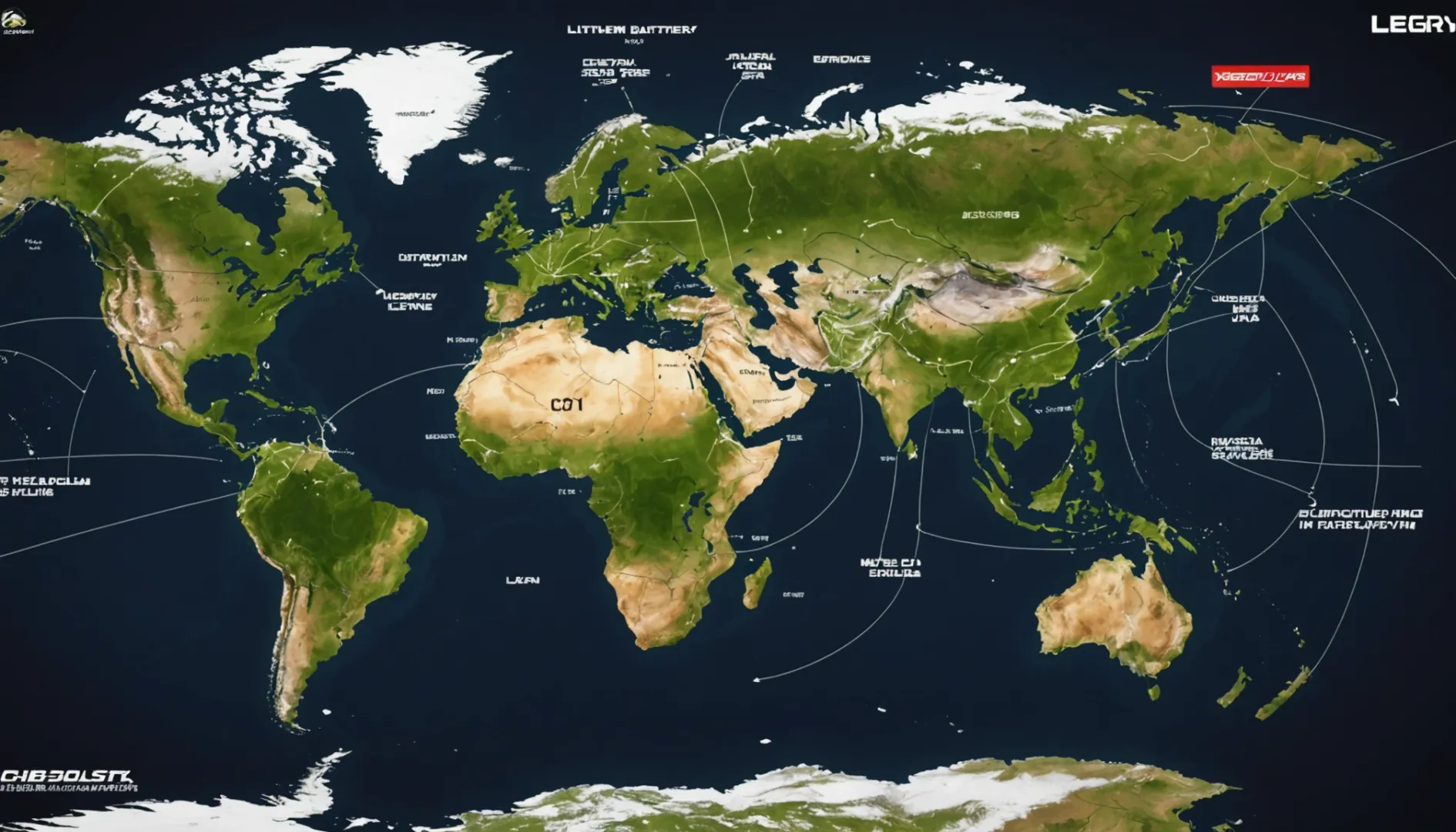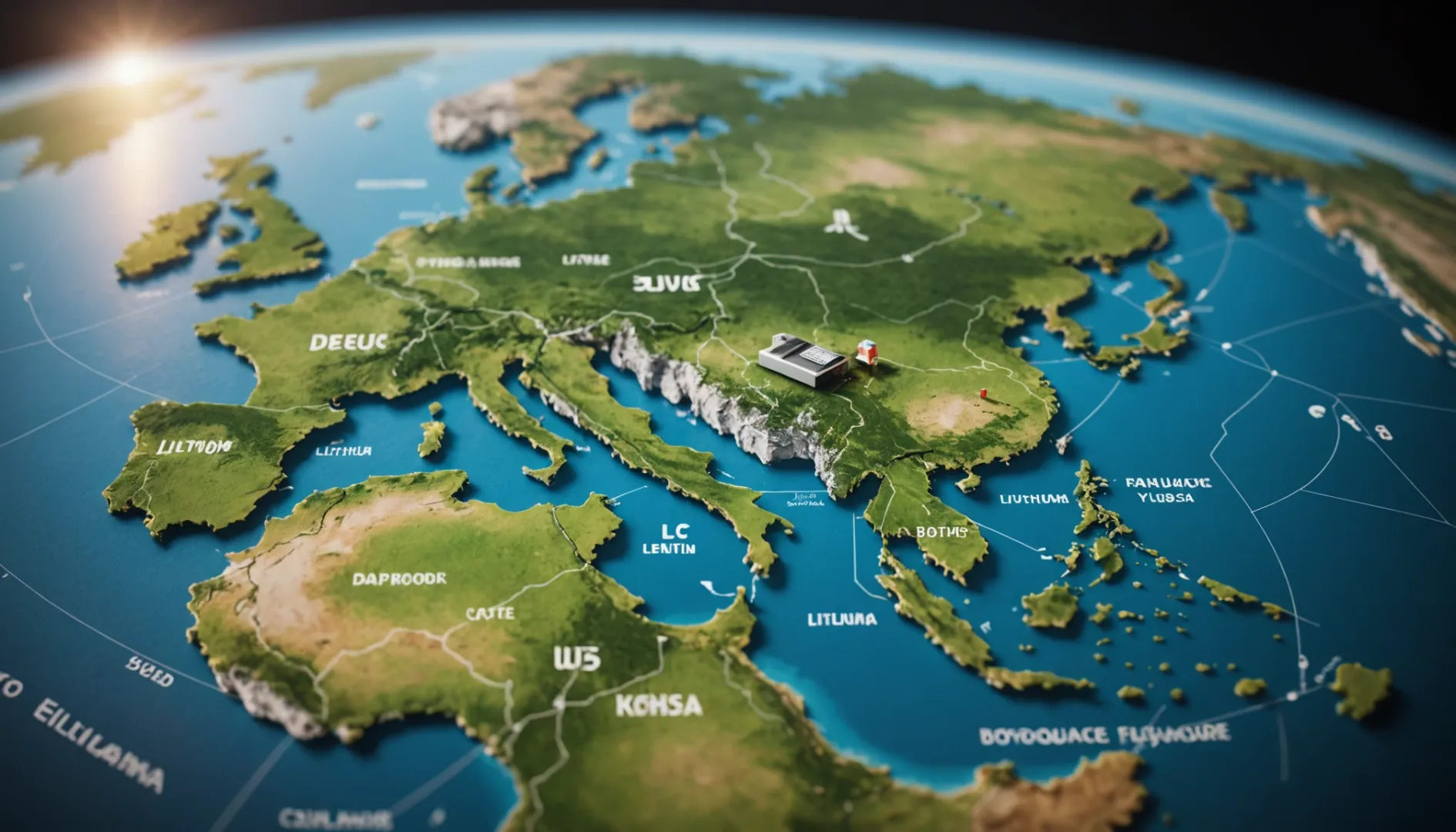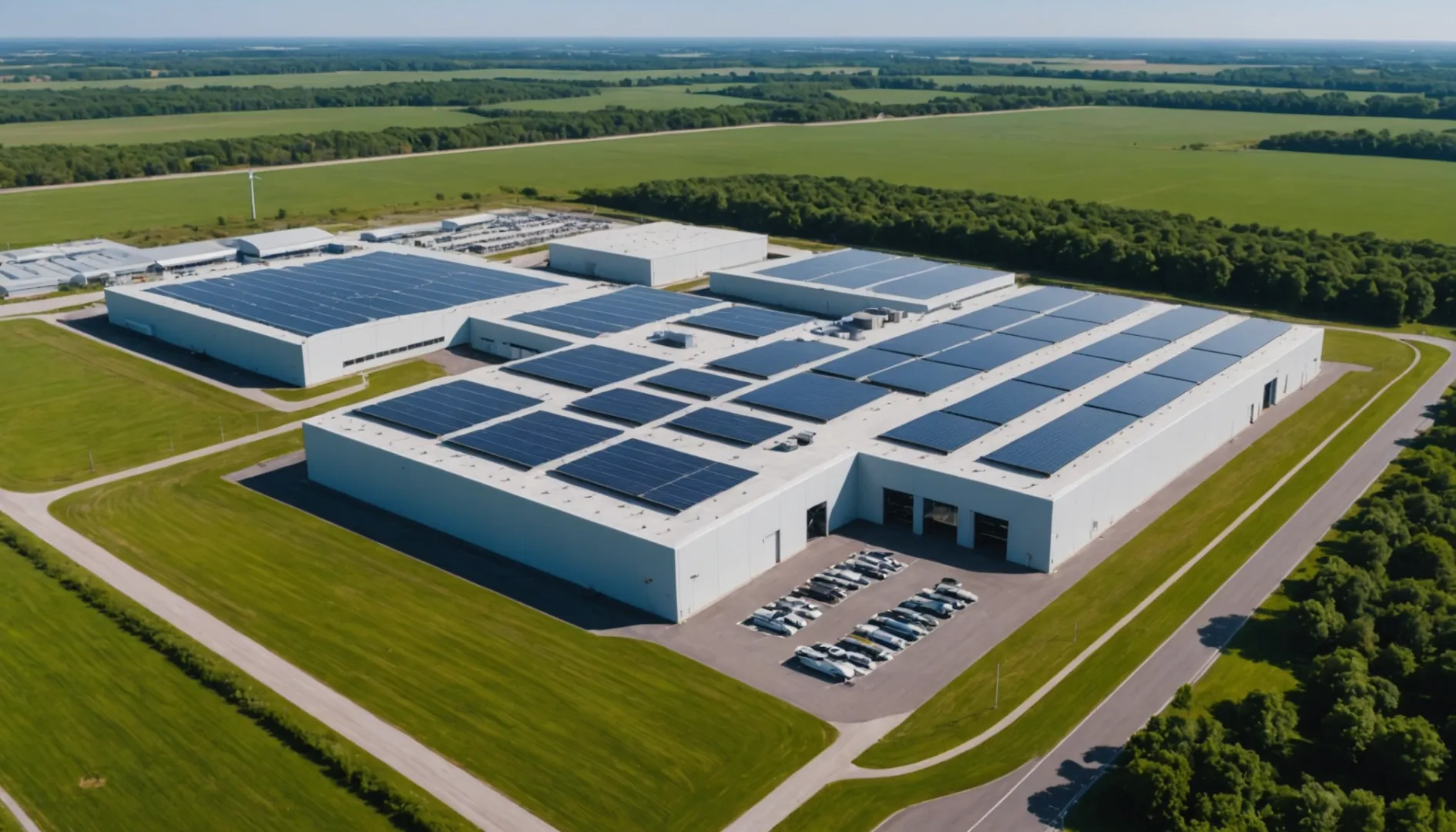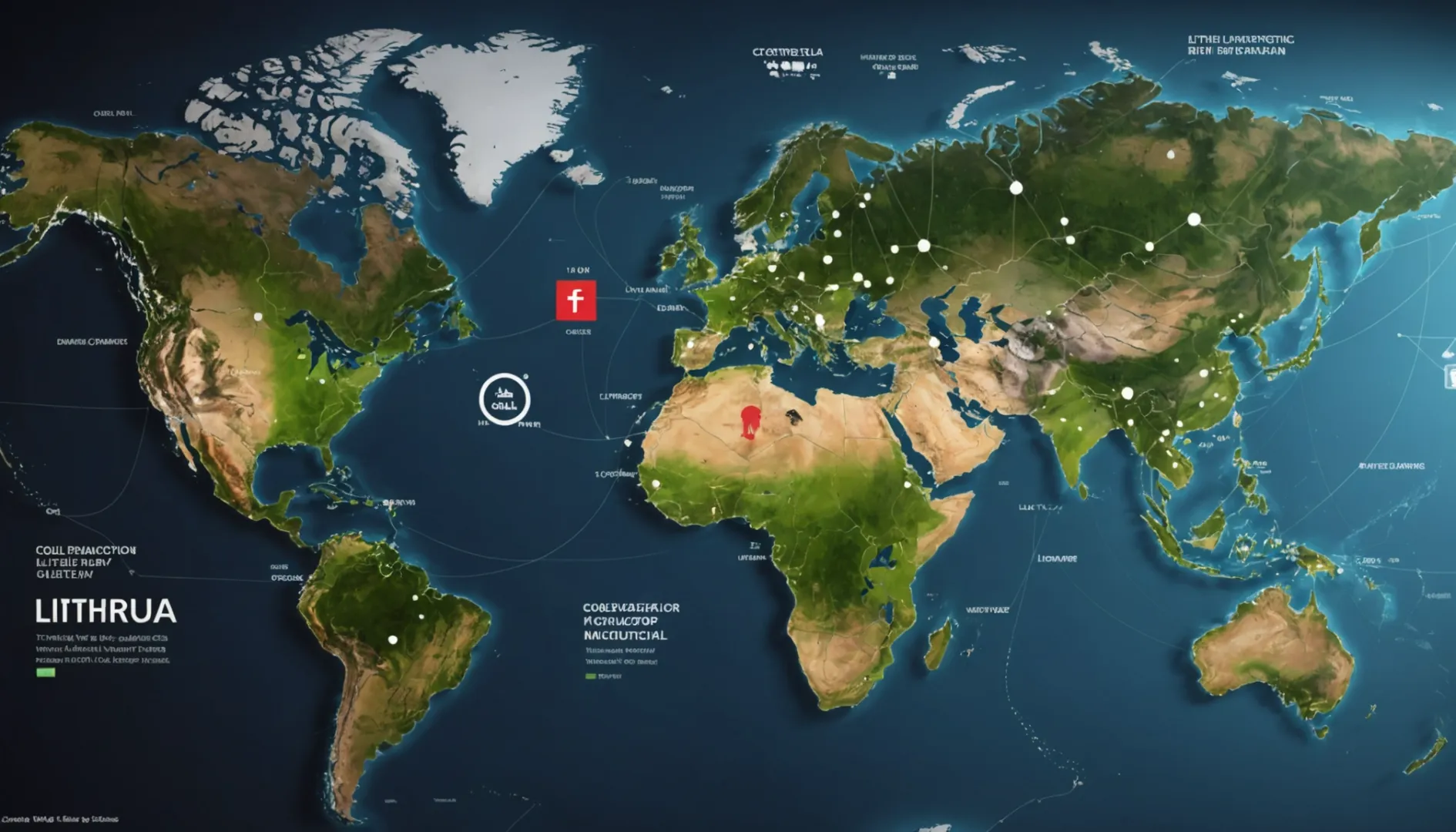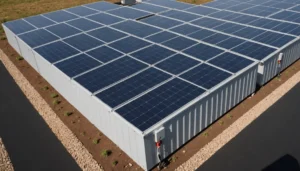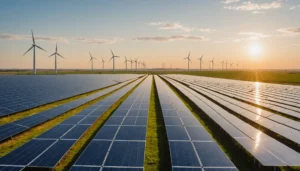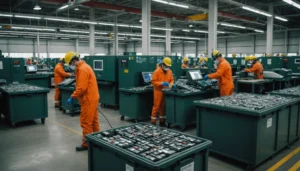Ever wondered who's steering the ship in the world of lithium-ion batteries?
CATL (Contemporary Amperex Technology Co. Limited) holds the crown as the top global producer of lithium-ion batteries, with a projected market share of 37.7% in 2024. Based in China, this powerhouse churns out over 100 GWh annually.
Thinking about CATL's dominance reminds me of my first deep dive into the world of electric vehicles. It's fascinating how one company can lead the charge (pun intended) with such a massive share. But while CATL reigns supreme, they're not alone on this ride. Many other players are hot on their trail, each striving to expand and innovate. In this post, I'll delve into the key industry figures, their growth stories, and what these shifts mean for the future landscape of lithium battery production.
CATL leads global lithium battery market in 2024.True
CATL holds a 37.7% market share globally, leading in production.
Tesla manufactures all its batteries in the US.False
Tesla collaborates with Panasonic and has joint ventures abroad.
Why is China's Battery Industry Leading the World?
Ever wondered why China is sprinting ahead in the global battery race? Let's dive into the secret sauce behind their success.
China's battery industry surpasses others by leveraging strategic government policies, hefty infrastructure investments, and relentless R&D pursuits. These factors, paired with a robust supply chain and escalating market demand, secure China's leading position in the global battery arena.
Strategic Government Policies
I remember a conversation with a friend who works in the renewable energy sector, and she couldn't stop talking about China's savvy approach to nurturing its battery industry. The government's strategic policies are like a turbo boost for the sector. For instance, their subsidies for electric vehicles (EVs) and renewable energy projects1 are game-changers, driving up demand for lithium-ion batteries. Programs like "Made in China 2025" aren't just buzzwords—they're a call to action for domestic manufacturers to step up their game.
Massive Investments and Infrastructure
On a visit to one of the bustling cities in China, I was astounded by the scale of infrastructure development. Chinese firms, with backing from both state and private investors, have poured billions into expanding production capabilities. Take CATL2, for instance; it feels like they've got bases everywhere in China, ready to ramp up production at lightning speed. It's this kind of infrastructural muscle that keeps China's battery output consistently on the rise.
Research and Development Efforts
A friend's story comes to mind about her time working with BYD. She would often mention how much emphasis was placed on R&D there. It's no surprise that innovation is at the heart of China's battery prowess. Companies like BYD aren't just competing—they're setting the pace by investing heavily in R&D. Collaborative efforts between universities and industry players mean they're always pushing technological boundaries, which keeps them leagues ahead of international rivals.
Established Supply Chain and Market Demand
One day, while sipping coffee with a colleague who works in logistics, he explained how China's well-oiled supply chain machine hums along smoothly. They have it all figured out—from efficiently sourcing raw materials like lithium and cobalt to speeding up manufacturing processes. This vertical integration is a cost-saver and a speed enhancer. Plus, with such a massive domestic market hungry for EVs and electronics, Chinese manufacturers are never short on demand.
Competitive Global Positioning
I recently read about Chinese manufacturers setting their sights beyond local borders, like pioneers exploring new lands. They're not just content with dominating domestically; they're establishing production bases in Europe and Asia to capture new markets. This kind of global expansion isn't just smart—it's visionary. By doing so, they're not only addressing regional demands but also sidestepping potential trade tensions and tariffs. This strategy ensures that China's influence in the battery market is felt far and wide, securing its status as a global powerhouse.
China's CATL holds a 37.7% global market share in 2024.True
CATL is a leading battery manufacturer with a significant market share.
Panasonic exclusively produces batteries for Tesla in Japan.False
Panasonic also collaborates with Tesla in the US for battery production.
How Do South Korean Manufacturers Impact the World?
I never realized how much South Korean manufacturers influence our daily lives until I started looking into it.
South Korean manufacturers drive global innovation, particularly in technology, automotive, and battery sectors, shaping industry standards worldwide.
Technological Innovation
Ever since I got my first smartphone, I've been fascinated by how quickly technology evolves. South Korea is a powerhouse in this field, with giants like Samsung3 and LG leading the charge. Whether it's the sleek foldable phones or those stunning OLED TVs, these companies have a knack for setting trends that ripple across the globe. It's like every time I check out a new gadget, I see a bit of South Korean ingenuity shining through.
Automotive Industry
I remember my first car being a Hyundai, and it was the perfect blend of style and reliability. South Korean brands like Hyundai4 and Kia have really made their mark worldwide. They're not just about traditional cars anymore; they're diving headfirst into electric vehicles (EVs). The Hyundai Ioniq 5 is one such marvel, showcasing their commitment to sustainability and cutting-edge design. It's exciting to think that these innovations are helping to drive us all towards a greener future.
Battery Manufacturing
Speaking of going green, batteries are the unsung heroes of this revolution. South Korea's heavyweights like LG Energy Solution and Samsung SDI5 are crucial players in the global battery scene. They power everything from our everyday gadgets to electric cars, making strides in efficiency and sustainability. Imagine a world where renewable energy is the norm—it's companies like these that are making it possible.
Economic Influence
The impact of South Korean manufacturers goes beyond just making cool stuff. They're a major force in the country's economy, driving growth and stability. The government's support through innovation-friendly policies has kept them competitive on the world stage. Plus, with strong trade partnerships6, South Korea has firmly positioned itself as a key player in the global market. It's amazing how these manufacturers not only contribute to technological progress but also bolster economic resilience.
LG Energy Solution holds 13% global market share in 2024.True
LG Energy Solution is a major South Korean battery manufacturer with a 13% share.
BYD's headquarters are located in Seoul, South Korea.False
BYD is based in Shenzhen, China, not Seoul, South Korea.
How Are Japanese Companies Innovating in Battery Technology?
When I think about battery tech, I’m blown away by how Japanese companies are pushing boundaries to make them more efficient and eco-friendly.
Japanese companies are revolutionizing battery technology with innovations like manganese-boosted and solid-state batteries, enhancing EV efficiency. They achieve this through cutting-edge research, strategic partnerships, and sustainable practices, keeping them at the forefront of the global market.
Pioneering Manganese-Boosted Batteries
I remember when I first read about Panasonic's work on manganese-boosted batteries. It was like discovering a secret recipe that promises not just better energy density but also a friendlier price tag. These batteries are a game-changer for the electric vehicle (EV) market because they use manganese as a cathode material, which is much cheaper than cobalt. This shift not only cuts costs but also answers sustainability concerns7 related to the production of traditional batteries.
Advancements in Solid-State Batteries
Solid-state batteries are another thrilling frontier. Toyota is investing heavily here, and I can't help but get excited about their potential. These batteries boast higher energy densities, faster charging times, and improved safety due to their non-flammable solid electrolytes. Imagine driving a car that's safer and more efficient! The pursuit of this technology underscores Japan's commitment to sustainable innovation8.
Enhancing Electric Vehicle Efficiency
Improving EV efficiency is like adding miles to my road trips without extra stops. Japanese companies are tackling this head-on by integrating more efficient technologies into vehicles. Nissan, for instance, is working with AESC to develop lighter batteries that extend EV range while reducing overall weight. This focus not only highlights Japan's strategic edge but also makes me feel like I'm witnessing the future of driving unfold in the global EV market9.
Strategic Partnerships and Collaborations
I’ve always believed that teamwork makes the dream work, and Japanese companies seem to agree. By partnering with global giants like Tesla and local automotive firms, they accelerate research and development. Panasonic's joint venture with Tesla is a prime example of how shared expertise can lead to groundbreaking advancements in battery tech. These collaborations ensure that Japan stays nimble and innovative in the face of market demands10.
Sustainable Practices in Battery Production
Sustainability is more than a buzzword for these companies—it's a core value. I've seen how they’re reducing their environmental footprint by recycling battery materials and using renewable energy in production processes. These initiatives not only align with global environmental goals but also enhance public perception11 of their products. It feels good to know that the products I'm interested in are part of a larger movement towards a healthier planet.
CATL holds 37.7% of global battery market in 2024.True
CATL is a leading battery manufacturer with a significant market share.
Panasonic has no production facilities in the US.False
Panasonic has a joint venture with Tesla in the US.
How is Europe making its mark in the global battery market?
Have you ever wondered how Europe is carving its path in the global battery market, competing against giants like China and the US?
Europe's role in the global battery market is growing rapidly, driven by strategic investments and policies to boost local production. Leading companies such as Northvolt are at the forefront, planning major factories to increase Europe's share in this crucial sector.
Europe's Strategic Investments in Battery Production
I remember the first time I realized just how pivotal Europe was becoming in the battery world. It was during a conference in Stockholm, where the buzz was all about the European Battery Alliance. This initiative is no small feat—it’s an ambitious plan aimed at creating a competitive and sustainable battery industry right here in Europe. From fostering innovation to scaling up production, it's all about ensuring sustainability across the supply chain.
Countries like Sweden and Germany are leading the charge, with companies like Northvolt12 making substantial investments in gigafactories. I’ve seen firsthand how Northvolt plans to not only satisfy European demand but also set itself up as a global leader. With backing from both public and private sectors, Europe is serious about reducing its reliance on Asian imports.
Collaboration and Innovation
When I think about collaboration, I recall a fascinating project I stumbled upon in Berlin. It involved partnerships between governments, companies, and research institutions all working together to advance battery technologies. Take Germany's Fraunhofer Institute, for example—they’re developing solid-state batteries13, which are being hailed as a game-changer for EVs due to their enhanced safety and efficiency.
These cross-border projects within Europe aim to create a unified approach to battery manufacturing, making sure that technological advancements are shared across member states. This collective effort bolsters Europe’s ability to compete with powerhouses like China.
Policy Frameworks and Environmental Goals
Europe's policies are more than just words on paper—they’re guiding us toward a greener future. The push for electrification of transport and renewable energy storage has sent demand for batteries through the roof. The EU's Green Deal is a testament to this, setting ambitious targets for cutting carbon emissions and promoting sustainable energy storage14.
This policy environment does more than fuel demand; it drives manufacturers to innovate greener production processes. It's inspiring to see Europe positioning itself as a leader in sustainable battery technology.
Challenges and Opportunities
Of course, it's not all smooth sailing. Europe faces hurdles like securing raw materials and scaling production. But initiatives like the European Raw Materials Alliance are tackling these challenges by diversifying supply sources and enhancing recycling capabilities.
In wrapping up, Europe's role in the global battery market is characterized by strategic investments, collaborations, and a robust policy framework focused on sustainability. These efforts are setting the stage for Europe to become a key player in this rapidly evolving landscape.
China holds 37.7% of global battery market share in 2024.True
China leads the global market with CATL having a 37.7% share.
Europe has more battery production capacity than China.False
China dominates with higher production capacity, Europe is expanding.
TOWO Power Is a leader for lithium battery product solution company from China
Conclusion
CATL leads the global lithium-ion battery market with a 37.7% share in 2024, followed by BYD and LG Energy Solution, as competition intensifies across regions.
TOWO Power Is a leader for solar product solution company from China
-
Explore how China's subsidies boost its battery industry. ↩
-
Discover CATL's role in leading battery production. ↩
-
Explore how South Korea leads in electronics and tech advancements. ↩
-
Discover the groundbreaking aspects of Hyundai's latest electric vehicle. ↩
-
Understand the pivotal role of South Korea in the battery market. ↩
-
Learn about South Korea's strategic global trade relationships.
TOWO Power Is a leader for solar product solution company from China ↩ -
Learn how manganese reduces environmental impact in battery production. ↩
-
Explore the advantages of solid-state technology for safer EVs. ↩
-
Discover methods to enhance EV range and efficiency. ↩
-
Stay updated on emerging trends shaping the EV industry. ↩
-
Understand eco-friendly practices in Japanese battery manufacturing. ↩
-
Learn about Northvolt's strategic plans to expand battery production in Europe. ↩
-
Discover why solid-state batteries could revolutionize electric vehicles. ↩
-
Explore how the EU's Green Deal promotes sustainable energy storage solutions. ↩


